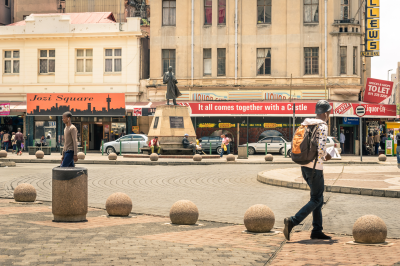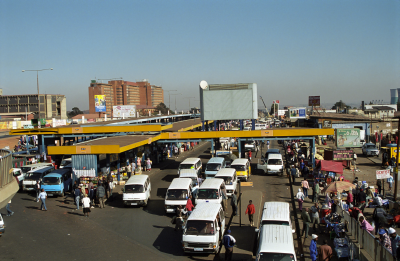Building on what Makgetla & Levin (2016) have put forward in a comprehensive new working paper from TIPS on the housing/ migration question on the platinum mines, stepSA’s work can perhaps contribute some tentative initial findings. Findings so far, from the project's on-going research into migration and housing in Rustenburg, Madibeng and Lephalale, may give grounds for looking again at the role of housing and services in framing the options for the platinum mining workforce, in terms of the Presidential Initiative for the distressed mining towns (2013). Read more >>

Ground breaking spatial and age group specific trend analyses not only highlights that the biggest proportion of this movement firstly, is taking place between and within the city regions of South Africa, but also the nature of this movement and the significant impact of youth movement. Spatially specific analyses by the CSIR (enabled through the basis provided by research in the stepSA Collaborative Initiative) and extended for DCOG’s Integrated Urban Development Framework, highlights a significant increase for 15-24 year olds between 2001 and 2011 - 48% increase in city regions, 36% increase in cities, and 34% positive growth in major growing. Read more >>

South African metros, cities and fast growing towns are clearly becoming the crucible where changing socio-economic realities and highly dynamic population demand pressures will shape government’s ability to reach its service delivery and transformation priorities and promises. Changing dynamics include growing urban areas, growing urban poverty, increased urban concentration of SA’s youth, vast urban’ growth in resource and coastal towns and dynamic impact of regional economies with some towns doubling in size and others losing more than 75% of economically active population between 2001 and 2011. Read more >>
However, even though development realities and diverse demand implications of highly mobile segments of society are place specific (differentiated impact for different cities, towns and nodes within them), implications are often beyond the reach of a municipal, place or sector specific investment target, strategy or plan. It is evident that public and private sector investment (housing, services, infrastructure etc.) in SA’s urban and rural areas needs to start taking cognisance of these trends, and that challenges can only be addressed through more concerted approaches. Click here to see recent inputs to the Parliamentary Committee for the Integrated Urban Development Framework


stepSA migration research and policy debates driven by the HSRC are shining an intense spotlight on the links between spatial policy, housing (both in terms of type and location), public transport cost and supply patterns, and access to the labour market by the poor. Data from in-depth household surveys, supplemented by GIS and transport supply data illustrates that key factors defining the settlement-mobility-livelihoods relationship are regional accessibility (relative to large urban centres and secondary towns), local accessibility, and household characteristics. Of particular importance to regional employment access is the spatial envelope of job opportunities that can be reached with the existing public transport network. This is not only relevant in location opportunities that particular areas offer often marginalised rural migrants, but also for urban youth and households in poverty to maximise their chances of gaining a foothold in the economy. Read more >>

